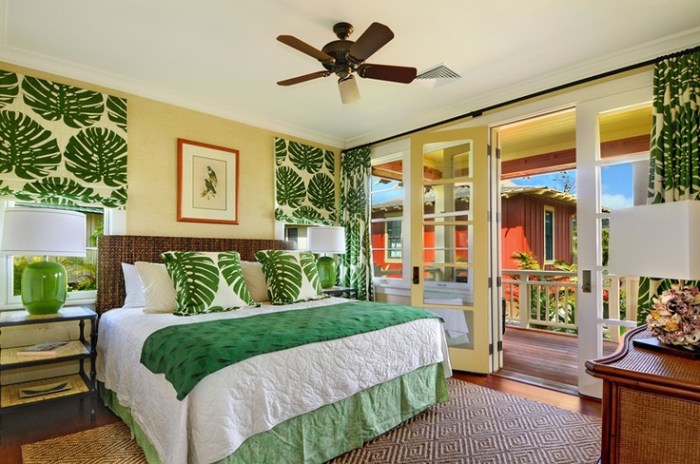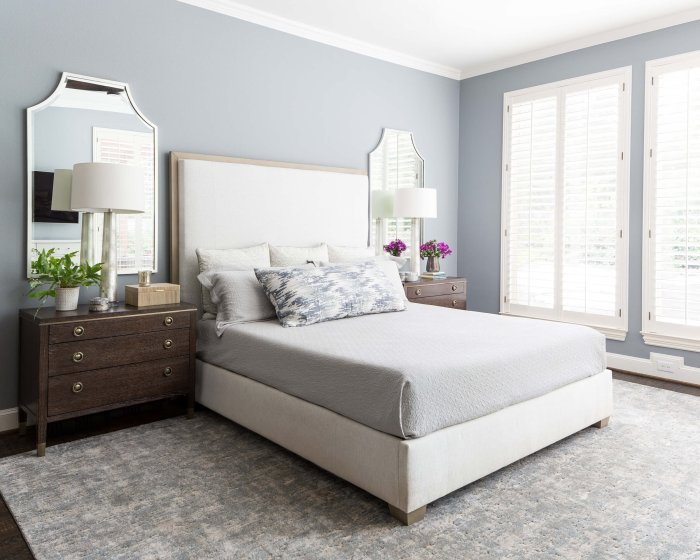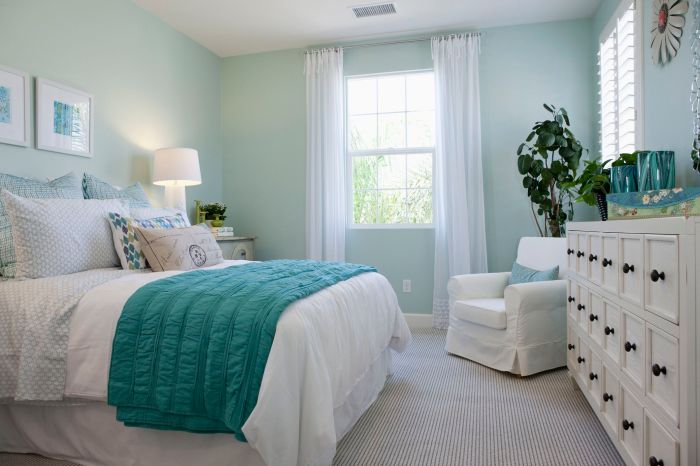Bungalow House Design with 3 Bedrooms
Bungalow House Design Characteristics

Bungalow house design with 3 bedrooms – Bungalows, characterized by their single-story design and emphasis on practicality and functionality, have enjoyed enduring popularity across various cultures and geographical locations. Their defining features, however, can vary significantly depending on regional influences and architectural trends. This exploration delves into the key characteristics of bungalow design, examining stylistic variations and common layout features.
The defining architectural features of a bungalow typically include a low-pitched roof, often hipped or gabled, a wide, overhanging eaves, and a prominent front porch. Many bungalows also feature exposed rafters or beams, simple ornamentation, and a connection to the surrounding landscape through large windows and a seamless transition between indoor and outdoor living spaces. These features contribute to a sense of relaxed informality and comfortable living.
The design emphasizes horizontal lines, creating a sense of spaciousness, even in smaller floor plans.
Bungalow house designs with three bedrooms offer ample space for personalized decor. One particularly appealing approach for a bungalow is to focus on creating a distinct feminine aesthetic in at least one of the bedrooms, drawing inspiration from resources like these feminine bedroom design ideas. This approach allows for a balance between the overall bungalow style and individual preferences, ensuring each space feels unique and inviting within the home’s overall design.
Bungalow Styles Across Regions
Bungalow styles exhibit considerable regional variation. American bungalows, particularly prevalent in the early 20th century, often showcase Craftsman influences with intricate woodwork, built-in cabinetry, and a focus on natural materials. In contrast, California bungalows frequently incorporate Spanish Colonial elements, featuring stucco exteriors, red tile roofs, and arched doorways and windows. British bungalows, on the other hand, tend to be more modest in size and ornamentation, reflecting a practical approach to design.
Indian bungalows, influenced by colonial architecture, often feature verandas and extensive use of local materials. These regional differences highlight the adaptability and enduring appeal of the bungalow design.
Typical Layout of a 3-Bedroom Bungalow, Bungalow house design with 3 bedrooms
A typical 3-bedroom bungalow floor plan often features an open-plan living area encompassing the living room, dining room, and kitchen. The bedrooms are usually clustered together for privacy, often located down a hallway. A bathroom is typically positioned centrally, providing convenient access from the bedrooms and living areas. Many 3-bedroom bungalows also include a utility room or laundry area, and a covered porch or patio extends the living space outdoors.
Variations exist, of course, depending on lot size and individual preferences, but this general arrangement prioritizes functionality and efficient space utilization.
Comparison of Bungalow Roof Styles
The roof is a significant architectural element of a bungalow, contributing significantly to its overall aesthetic. Different roof styles offer distinct visual appeal and practical benefits.
| Roof Style | Description | Image Description | Advantages/Disadvantages |
|---|---|---|---|
| Gable | A gable roof features two sloping sides that meet at a ridge, forming a triangular shape at the ends. | A simple, symmetrical triangle shape, often with a relatively steep pitch. Provides good ventilation and allows for attic space. | Advantages: Simple construction, good ventilation, attic space. Disadvantages: Can be vulnerable to wind damage in exposed locations. |
| Hip | A hip roof has sloping sides on all four sides, meeting at a ridge. | A pyramid-like shape with a gentle slope on all sides. Often considered more aesthetically pleasing than a gable roof. | Advantages: More resistant to wind damage than gable roofs, visually appealing. Disadvantages: More complex construction, less attic space. |
| Gambrel | A gambrel roof has two slopes on each side, with the lower slope steeper than the upper slope. | A double-sloped roof with a distinctive curve; resembles a barn roof. Provides ample attic space. | Advantages: Maximum attic space, visually striking. Disadvantages: More complex construction, higher cost. |
| Flat | A flat roof has a minimal slope, almost appearing flat. | A nearly horizontal roofline, often with a slight slope for drainage. Often found in modern bungalows. | Advantages: Modern aesthetic, cost-effective in some regions. Disadvantages: Prone to water damage if not properly maintained, limited attic space. |
Space Optimization in a 3-Bedroom Bungalow

Designing a comfortable and functional three-bedroom bungalow, especially on a smaller footprint, requires careful consideration of space optimization techniques. Maximizing natural light and incorporating clever storage solutions are key to achieving a spacious feel, even within a compact layout. This section will explore various strategies to achieve this.
Floor Plan Design Maximizing Natural Light
A well-designed floor plan is crucial for maximizing natural light. Consider an open-plan layout for the living, dining, and kitchen areas to allow light to flow freely throughout the main living spaces. Large windows, particularly on the south-facing side (in the Northern Hemisphere), should be prioritized. Strategically placed skylights can also supplement natural light in areas with limited window access.
For bedrooms, placing windows on opposite walls can create cross-ventilation and enhance natural illumination. The positioning of doors should also be carefully considered to avoid blocking light sources. For example, a bedroom positioned to maximize morning sun could feature a window that is mostly obscured by a door, while a window on the opposite wall would be open and unhindered.
Space-Saving Design Techniques for Small 3-Bedroom Bungalows
Several design techniques can significantly enhance the perceived spaciousness of a small bungalow. Using light and neutral colors on walls and floors creates a sense of airiness and openness. Mirrors strategically placed can visually expand the space by reflecting light. Multifunctional furniture, such as sofa beds or ottomans with storage, are excellent space savers. Built-in shelving and cabinetry can replace bulky freestanding furniture, optimizing both space and aesthetics.
Choosing furniture with slender legs and clean lines can also make a room feel less cluttered. A common technique in small bungalows is to use a single color scheme throughout, using lighter shades to maximize the light and give the illusion of greater space.
Built-in Storage Solutions in a 3-Bedroom Bungalow
Built-in storage is a game-changer in small bungalows. Under-stair storage can house cleaning supplies or seasonal items. Custom-designed wardrobes in bedrooms maximize vertical space and eliminate the need for bulky freestanding wardrobes. Built-in bookshelves in the living room not only provide storage but also add a decorative element. A built-in pantry in the kitchen can significantly improve organization and efficiency.
Even seemingly small spaces can be utilized; for instance, shallow cabinets built into alcoves can store items like linens or extra blankets. These integrated solutions blend seamlessly with the architecture, minimizing visual clutter and maximizing usable space.
Furniture Arrangements for a Small 3-Bedroom Bungalow Living Room
The arrangement of furniture significantly impacts the feel of a living room. Choosing the right arrangement is key to creating a comfortable and functional space.
- L-shaped seating arrangement: This configuration maximizes seating while leaving the center of the room open. It is ideal for small spaces where maximizing seating is a priority. An L-shaped sofa, for instance, can hug one or two walls, providing both seating and a defined space.
- Floating shelves: Instead of bulky bookcases, utilize floating shelves to display books and decorative items. This creates a more open and airy feel. Floating shelves are easily installed and come in a variety of materials and styles.
- Multifunctional coffee table: Opt for a coffee table with storage underneath or a lift-top design that can double as a dining table if needed. This is a practical solution for maximizing the space’s versatility.
- Minimalist furniture: Choose furniture pieces with clean lines and minimal ornamentation. Avoid bulky, oversized furniture that can overwhelm a small space. The focus should be on functionality and clean aesthetic.
3-Bedroom Bungalow
Designing a comfortable and functional three-bedroom bungalow requires careful consideration of several practical aspects beyond the initial layout. These factors significantly impact the long-term livability, energy efficiency, and overall value of the home. This section explores key practical considerations for successful 3-bedroom bungalow construction.
Ventilation and Insulation
Proper ventilation and insulation are crucial for maintaining a comfortable indoor environment and reducing energy consumption in a 3-bedroom bungalow. Effective ventilation removes moisture, prevents mold growth, and ensures a constant supply of fresh air. This can be achieved through strategically placed windows, exhaust fans in bathrooms and kitchens, and potentially a whole-house ventilation system. Insulation, on the other hand, minimizes heat loss in winter and heat gain in summer, reducing reliance on heating and cooling systems and lowering energy bills.
Adequate insulation in walls, ceilings, and floors is essential for energy efficiency. Consider using high-performance insulation materials such as spray foam or dense-packed cellulose for optimal results.
Accessibility Features
Designing a 3-bedroom bungalow with accessibility features caters to a broader range of potential occupants, including elderly individuals or those with disabilities. Wider doorways and hallways allow for easier wheelchair access. Ramps instead of steps provide convenient entry and exit points. Grab bars in bathrooms and showers offer stability and support. Lowered countertops and light switches make everyday tasks more manageable.
Lever-style door handles are easier to operate than traditional knobs. A zero-threshold shower eliminates barriers and improves accessibility. Careful planning during the design phase ensures the home can adapt to changing needs over time.
Energy-Efficient Design Choices
Incorporating energy-efficient design choices minimizes the environmental impact and operational costs of a 3-bedroom bungalow. High-performance windows with low-E coatings reduce heat transfer, minimizing energy consumption for heating and cooling. Energy-efficient appliances, such as Energy Star-rated refrigerators and washing machines, significantly reduce electricity usage. LED lighting consumes less energy and lasts longer than traditional incandescent bulbs. A properly sized and efficient heating and cooling system is essential for maintaining a comfortable indoor temperature without excessive energy consumption.
Consider incorporating solar panels to generate renewable energy, reducing reliance on the grid. Properly oriented windows can maximize natural light and reduce the need for artificial lighting.
Average Building Costs
The cost of building a 3-bedroom bungalow varies significantly depending on location, materials, and finishes. The following table provides a general estimate of average costs in different geographical regions. These figures are approximate and should be considered as a starting point for budgeting purposes. Actual costs may vary depending on specific project requirements.
| Geographical Location | Average Cost (USD) |
|---|---|
| Rural Midwest (USA) | $150,000 – $250,000 |
| Suburban Northeast (USA) | $250,000 – $400,000 |
| Urban West Coast (USA) | $400,000 – $600,000+ |
| Rural Southern England | £200,000 – £350,000 |
| Suburban Sydney, Australia | $450,000 – $700,000+ (AUD) |
Essential Questionnaire: Bungalow House Design With 3 Bedrooms
What is the average lifespan of a bungalow?
With proper maintenance, a well-built bungalow can last for 50 years or more.
How much does it cost to furnish a 3-bedroom bungalow?
Furnishing costs vary greatly depending on the style and quality of furniture chosen. Expect to budget several thousand dollars.
Are bungalows suitable for families with children?
Yes, bungalows can be excellent family homes, offering single-story living which can be safer and more convenient for families with young children.
What are some common challenges in building a bungalow?
Challenges can include finding suitable land, managing budgets effectively, and navigating local building codes and regulations.










